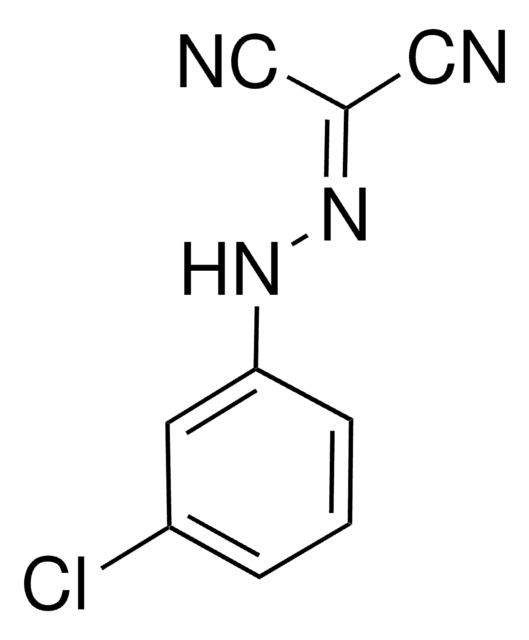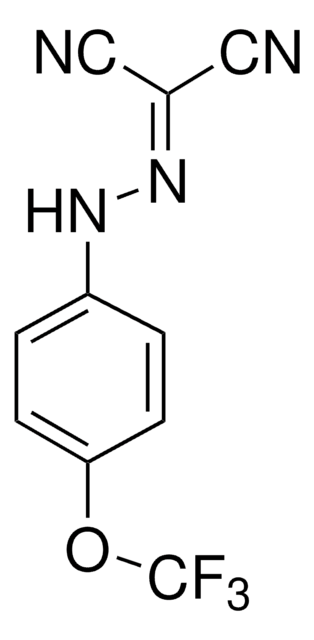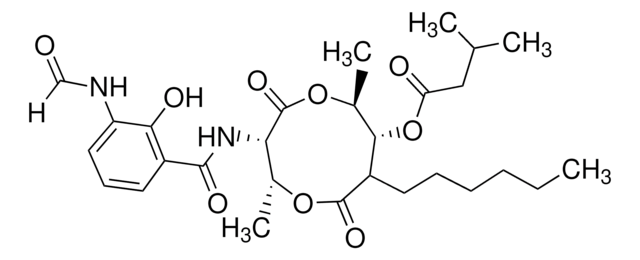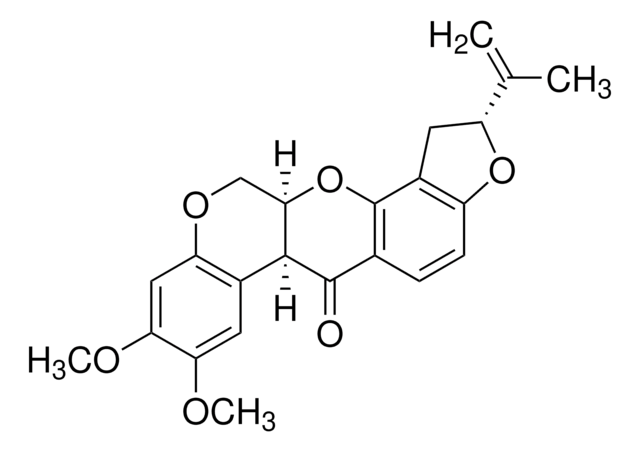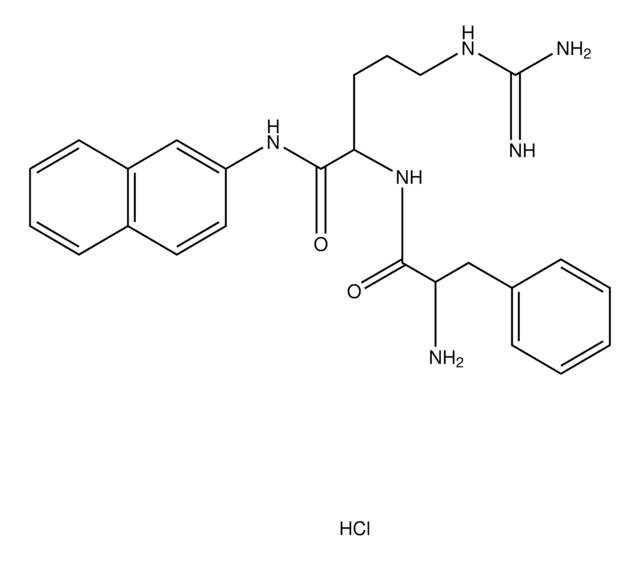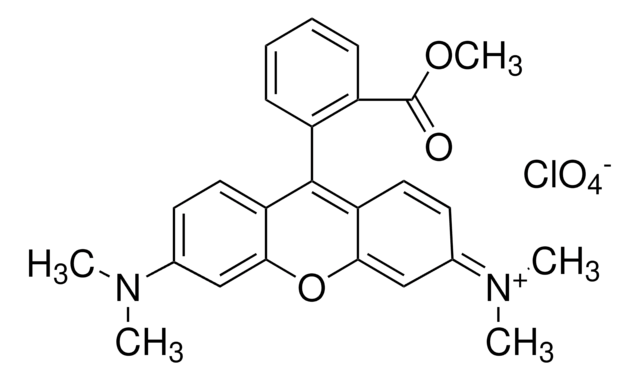215911
Carbonyl Cyanide m-Chlorophenylhydrazone
≥95% (HPLC), solid, mitophagy inducer, Calbiochem
Synonym(s):
Carbonyl Cyanide m-Chlorophenylhydrazone, CCCP
About This Item
Recommended Products
Product Name
Carbonyl Cyanide m-Chlorophenylhydrazone, Protonophore. Uncoupling agent for oxidative phosphorylation that inhibits mitochondrial function. Approximately 100 times more effective than 2,4-dinitrophenol.
Quality Level
description
RTECS - FG5600000
Assay
≥95% (HPLC)
form
solid
manufacturer/tradename
Calbiochem®
storage condition
OK to freeze
color
yellow
solubility
ethanol: 1 mg/mL
DMSO: 5 mg/mL
shipped in
ambient
storage temp.
2-8°C
SMILES string
Clc1cc(ccc1)NN=C(C#N)C#N
InChI
1S/C9H5ClN4/c10-7-2-1-3-8(4-7)13-14-9(5-11)6-12/h1-4,13H
InChI key
UGTJLJZQQFGTJD-UHFFFAOYSA-N
General description
Biochem/physiol Actions
cytochrome c oxydase
Warning
Reconstitution
Other Notes
Heytler, P.G., and Prichard, W.W. 1962. Biochem. Biophys. Res. Commun.7, 272.
Legal Information
Signal Word
Danger
Hazard Statements
Precautionary Statements
Hazard Classifications
Acute Tox. 3 Dermal - Acute Tox. 3 Inhalation - Acute Tox. 3 Oral - Eye Irrit. 2 - Skin Irrit. 2 - STOT SE 3
Target Organs
Respiratory system
Storage Class Code
6.1C - Combustible acute toxic Cat.3 / toxic compounds or compounds which causing chronic effects
WGK
WGK 3
Certificates of Analysis (COA)
Search for Certificates of Analysis (COA) by entering the products Lot/Batch Number. Lot and Batch Numbers can be found on a product’s label following the words ‘Lot’ or ‘Batch’.
Already Own This Product?
Find documentation for the products that you have recently purchased in the Document Library.
Our team of scientists has experience in all areas of research including Life Science, Material Science, Chemical Synthesis, Chromatography, Analytical and many others.
Contact Technical Service